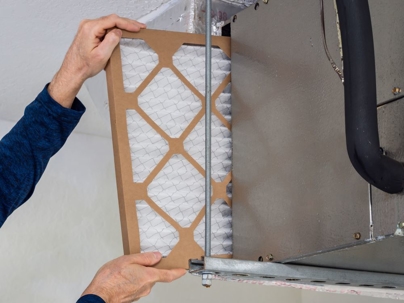Your filter is an important component of your HVAC system. Whether your home has an electric furnace, a gas furnace, or an oil furnace, filter quality and cleanliness will ensure great air flow quality and will help your system run more efficiently — while a poor filter will do the opposite.
At Presidential Heating & Air Conditioning, we’re proud to offer a wide range of HVAC services, from HVAC preventative maintenance, to HVAC repair, to furnace installation to helping you choose the right indoor air quality products including the right air filter.
Here are a few important factors to consider when choosing the right filter for your system and your home.
MERV Rating
The first area to look at is the actual efficiency rating of the filter. The primary rating system for filters is the MERV rating (Minimum Efficiency Reporting Value). MERV rates filters based on how effectively they catch debris of varying sizes from the air. Filters are rated between 1-20 with 1 being the lowest and 20 being the highest level of filtration. MERV filters rated over 16 are typically used in hospitals and cleanrooms though we are seeing MERV 16 for home systems as well. Most home MERV filters fall between 5-13.
Filter Type
There are a few types of HVAC filter technology available:
- Disposable fiberglass: These are the most popular filter type due to their affordability. Made from strands of fiberglass they are a good option for removing dirt and debris but not a good option for removing airborne contaminants. These filters need to be replaced frequently since they easily get clogged with dirt and dust.
- Disposable pleated: The next most common filters are cotton or polyester pleated filters. They are folded multiple times to create the pleats and these pleats provide more surface area to trap dust and dirt but also mold spores and pet dander. The more pleats, the better filtering.
- Media Filters: Similar to the standard pleated filter, media filters have a large surface area to filter out harmful particles. Installed between the duct and blower cabinet, media filters have the ability to remove up to seven times more dust and other particles including flu viruses due to its pleated material. Unlike the standard pleated filter, media filters only need to be replaced every 6 months to a year. You will want to check with your HVAC technician prior to purchasing your media filter. Some can have too many pleats for your system and will cause a strain on your HVAC system and reduce its efficiency.
- Electrostatic Filters: Created using a mixture of fibers, electrostatic filters use static electricity to capture air pollutants. The magnetism of the electrostatic charge keeps the particles from scattering throughout your home. While electrostatic filters are good at removing smaller particles like dust, shed skin cells, pet dander, and pollen, they aren’t as effective at removing larger particles. They typically have a low MERV rating and thus should be combined with an air purifier if you want to remove viruses from your home. You can find electrostatic filters in both washable and disposable versions.
Which of these you choose will depend on factors like the type of filter you want to use, how often you plan to replace it, and your budget.
If you would like help on selecting the right furnace filter for you and your home, or to learn about any of our HVAC solutions, speak to the professionals at Presidential Heating & Air Conditioning today.

